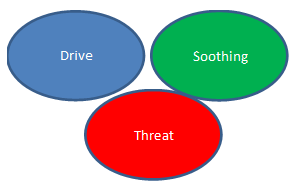Understanding how to be a Compassionate Leader
As humans, we all have the capacity to be inspirational – or to be truly appalling. The greatest source of conflict is other human beings, and yet behaving towards others with compassion, in a way that enables people to bring the best version of themselves to the table, is free.
So why don’t more people do it?
The answer to this lies in understanding some of the fundamentals of human nature and physiology.
The basic challenge for humans is to be able to navigate our way around the social group and find our place in the hierarchy of the tribe. Mostly we do this by social comparison, which is the source of the internal voice that makes us feel better or worse. (“They will think I am stupid”, “I am better than her” “I’m not good enough”)
You end up either feeling rubbish or unrealistically good. Resilience is about accepting what is, and still being able to be compassionate to ourselves and to others.
Studies in neuropsychology show that humans have three systems that need to be balanced:

Drive creates “go out and achieve”. The drive system will come up with a plan (work hard, do this, do that). The physiology of Drive is also dopamine based and addictive and is what creates busy fools.
Threat is based on what others think of you – it challenges your self-esteem. “They’ll think I’m no good”, I don’t know what I’m doing”, “People don’t like me”.
Soothing calms you down and changes your physiology.
Healthy humans are able to balance all three but when people press our Threat buttons (for example one of the most powerful threats in the workplace is shame) if we are not self-aware then our reaction is to FAFF:
Freeze
Appease
Fight or
Flight
All of which produce unhelpful behaviours and distractions which in turn absorb huge amounts of time and energy..
Given these fundamentals about human nature, it is important for leaders to remember:
- Think dispassionately and focus on facts rather than your ’inner voices’. It is very easy for Threat to take over the show.
- Be self-aware. You need to be aware of the effect you are having on those around you.
- People who are behaving problematically could well be scared and be in Threat mode themselves.
- Stress is toxic – literally. It releases chemicals that are harmful to us. So be very aware of the importance of compassion for yourself and for others. Soothe yourself.
With some thought and practice, the compassionate leader can navigate the social group without letting their Threat response take over, and have compassion for themselves as well as for others. Imagine how efficient you will be when people are not spending all that time and energy on FAFFing.
Find out more in our Open Workshops
